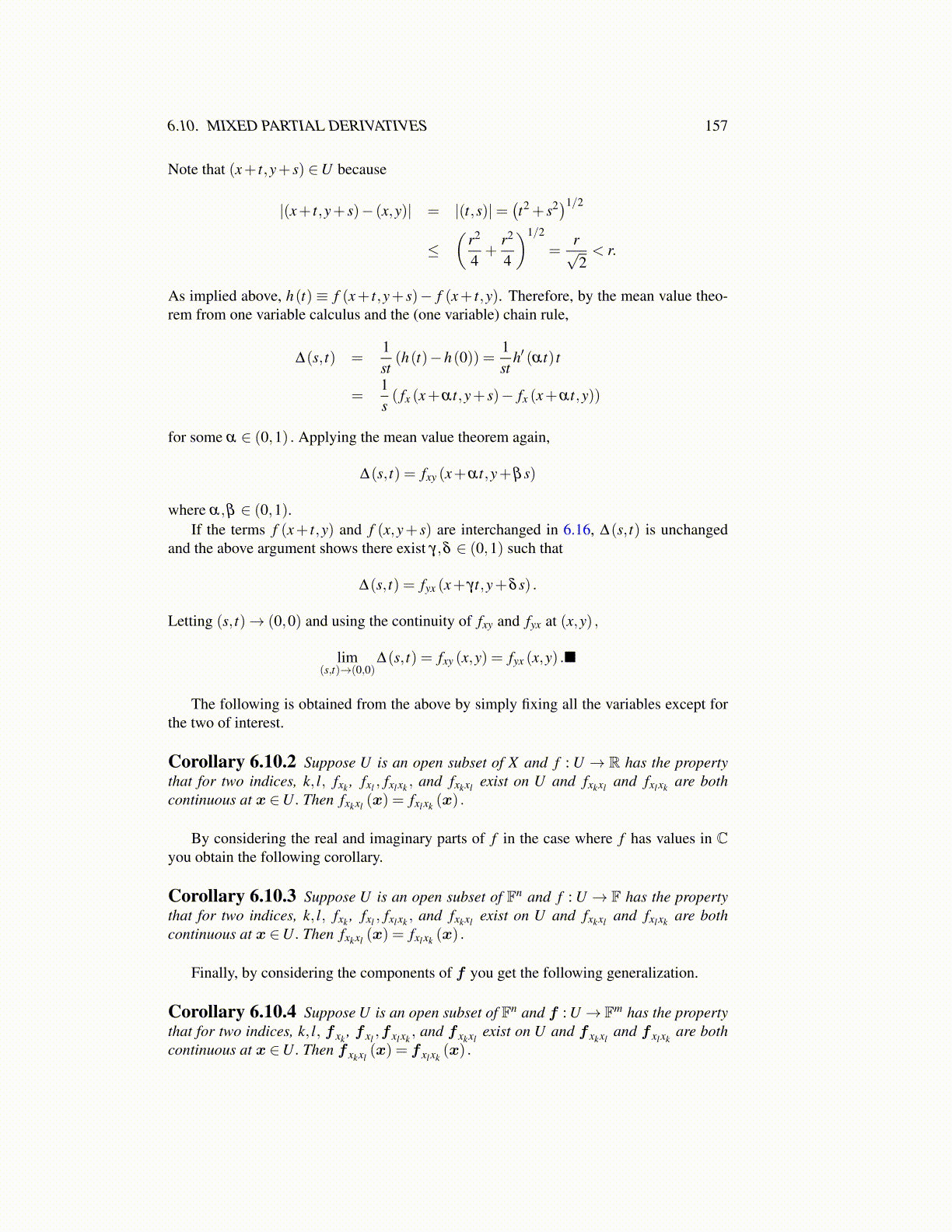
6.10. MIXED PARTIAL DERIVATIVES 157
Note that (x+ t,y+ s) ∈U because
|(x+ t,y+ s)− (x,y)| = |(t,s)|=(t2 + s2)1/2
≤(
r2
4+
r2
4
)1/2
=r√2< r.
As implied above, h(t) ≡ f (x+ t,y+ s)− f (x+ t,y). Therefore, by the mean value theo-rem from one variable calculus and the (one variable) chain rule,
∆(s, t) =1st(h(t)−h(0)) =
1st
h′ (αt) t
=1s( fx (x+αt,y+ s)− fx (x+αt,y))
for some α ∈ (0,1) . Applying the mean value theorem again,
∆(s, t) = fxy (x+αt,y+β s)
where α,β ∈ (0,1).If the terms f (x+ t,y) and f (x,y+ s) are interchanged in 6.16, ∆(s, t) is unchanged
and the above argument shows there exist γ,δ ∈ (0,1) such that
∆(s, t) = fyx (x+ γt,y+δ s) .
Letting (s, t)→ (0,0) and using the continuity of fxy and fyx at (x,y) ,
lim(s,t)→(0,0)
∆(s, t) = fxy (x,y) = fyx (x,y) .■
The following is obtained from the above by simply fixing all the variables except forthe two of interest.
Corollary 6.10.2 Suppose U is an open subset of X and f : U → R has the propertythat for two indices, k, l, fxk , fxl , fxlxk , and fxkxl exist on U and fxkxl and fxlxk are bothcontinuous at x ∈U. Then fxkxl (x) = fxlxk (x) .
By considering the real and imaginary parts of f in the case where f has values in Cyou obtain the following corollary.
Corollary 6.10.3 Suppose U is an open subset of Fn and f : U → F has the propertythat for two indices, k, l, fxk , fxl , fxlxk , and fxkxl exist on U and fxkxl and fxlxk are bothcontinuous at x ∈U. Then fxkxl (x) = fxlxk (x) .
Finally, by considering the components of f you get the following generalization.
Corollary 6.10.4 Suppose U is an open subset of Fn and f : U → Fm has the propertythat for two indices, k, l, f xk
, f xl,f xlxk
, and f xkxlexist on U and f xkxl
and f xlxkare both
continuous at x ∈U. Then f xkxl(x) = f xlxk
(x) .